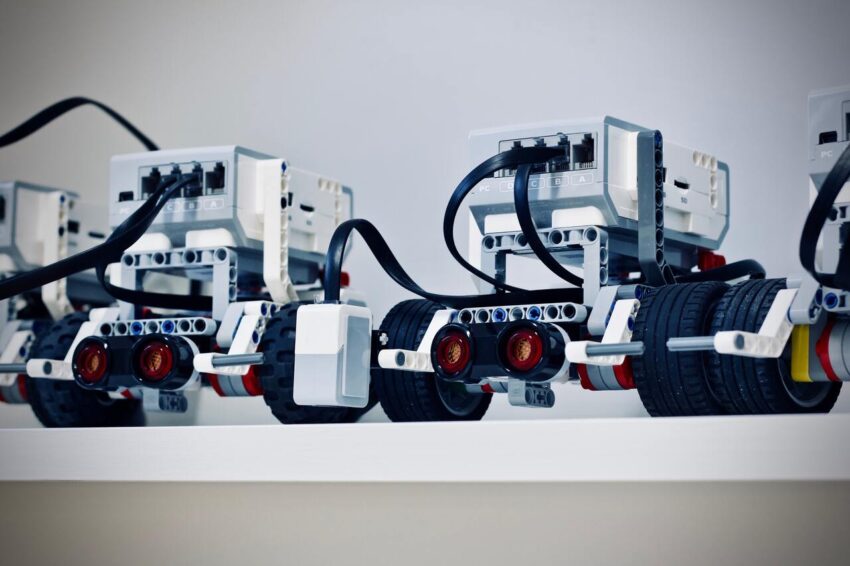British supermarket chain Co-op has announced today of its new partnership with Amazon Prime, which will seek to deliver same-day groceries in various UK towns.
The partnership is going ahead as Co-op looks to raise its online sales from £70m to £200m.
Co-op has faced some backlash over the news, with its ethics being brought into question due to the controversy surrounding Amazon. It will be the Amazon UK website in which customers will place their orders, where Co-op products will be delivered.
Same-day delivery is the core selling point of this initiative, where two-hour slots can be selected by customers for free on orders over £40 – otherwise, there is a £3.99 delivery fee. However, the operation has brought a lot of interest in how they will deliver the groceries – with robots.
The supermarket is looking to extend its robot deliveries, which are small devices that autonomously drive themselves on the pavements towards the delivery address. With various sensors and well-developed AI technology, the robot avoids crashes, looks before it crosses the road, and can hold several bags of shopping.
This is perhaps why Milton Keynes is the first place in which Co-op will be delivering the same-day groceries – it’s a town that already has experience with robot deliveries. Starship Technologies, the firm that Co-op is using to deliver the goods, have already facilitating same-day robotic deliveries in Milton Keynes for over a year.
It may be a wonder what Amazon is contributing to this partnership, but it’s a matter of Co-op needing a larger reach. Amazon will be hosting the platform in which customers order the products, which is a safe bet for Co-op. Co-op Chief, Steve Murrells, claims that the Amazon deal will help Co-op reach a wider distribution.
Of course, many Co-op customers will be disappointed to see their local chain turn to a large multinational corporation, one with lots of controversies, become part of their grocery shopping experience.
All 3,000+ grocery items will be available with the new delivery system, whilst the fleet of robotic delivery devices is set to expand from 200 to 500 by the end of 2021.
Robotic leverage
What Co-op is trying to achieve is faster, on-demand groceries, and this can only be viably achieved through automation. It’s not just customer deliveries that are making the most of automation, of course. Autonomous mobile robotics company such as Robotnik is seeing rising demand for its Autonomous Mobile Robot (AMR) fleet. Thanks to its service of robot customization, mobile robots can adapt to the need of every industries.
Logistic companies are increasingly turning to such solutions for various reasons, but it was perhaps the pandemic that really triggered this shift in priority. The Covid-19 virus shone a light on the vulnerability of a workforce. An outbreak in a warehouse’s staff could very quickly halt production, something that is mitigated with robotic operations.
It’s not only the diminishing workforce that’s fueling robotics in logistics, but also the rising health standards that are being implemented. Whether it’s safety regarding machinery protocol or Covid-19 prevention practices, the more health and safety regulations that are brought in, the more incentive there is to turn to robotic replacements.
Finally, we can also put the robotic revolution down to the power of data. Data analytics is playing an increasingly powerful role in logistics, with the potential for operational data growing. Robotics can help collect more data, as their workflow and behaviour are more easily monitored. This is preferable to companies that are relying on data to refine and increase the efficiency of their workflow.
Of course, there are companies like Amazon that try and gather as much data as they can from their workforce, but it has become a PR minefield. Having staff work to the second, with extremely precise break times and timeframes to complete tasks is a controversial ethical position. The alternative is to have less reliance on data, which isn’t ideal either.
The ending of the high street
With the rate of progression that we are seeing with robotic solutions, the scope for economies of scale seems to grow larger. The larger it grows, the more difficult it is for independent single-store companies to compete. Not only do they lack the vertical integration of a profoundly efficient supply-chain, but the delivery and convenience of their customer interactions are falling further behind.
Beyond physical deliveries, it’s also the in-store experience. Not only are larger chains using automated self-checkout solutions that independent stores cannot afford, but Amazon is even experimenting with a high street store that is built on cameras, sensors and algorithms that can track what customers pick up off the shelf. A till-less, interactionless experience – something that seems perfectly Covid-19 appropriate.
Whilst some customers may have their own views on this, the issue of customer interaction is certainly not a concern for behind-the-scenes production. Whatever the consumer’s opinion, robotic solutions are not only here to stay, but are here to take over.
